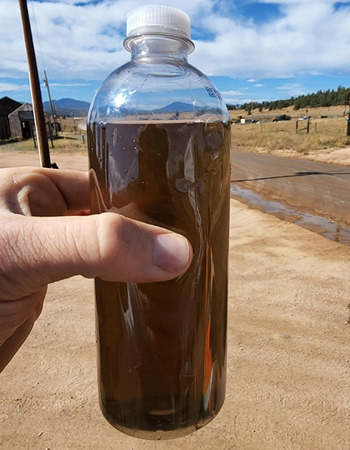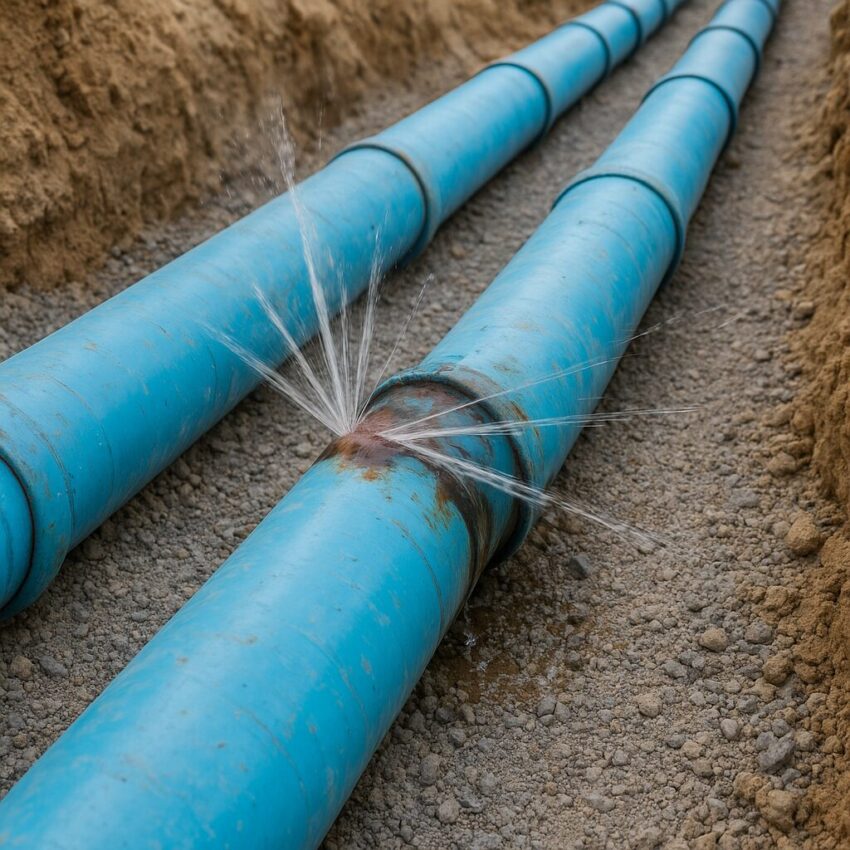Is 40% Water Loss Draining Your 100 Years Old Pipes
Water utilities across Colorado face an invisible crisis. While residents turn on taps expecting clean water, up to 40% of that treated water never reaches them. It escapes through century-old pipes, costing utilities millions in purchased water and emergency repairs. This isn’t just an engineering problem—it’s a financial emergency threatening the sustainability of our water systems.
The Hidden Cost of Aging Infrastructure
This is a community I recently chatted with. They purchase water at $15 per thousand gallons, using nearly one million gallons daily during peak season. With 40% water loss, they’re essentially pouring $6,000 worth of treated water into the ground every single day. That’s over $2 million annually—enough to fund significant infrastructure improvements.
The problem runs deeper than money. This community operates with:
- Clay pipes installed in the 1880s
- Galvanized lines from the 1960s already past their service life
- Cast iron mains showing severe corrosion
- Wooden pipes still buried under main streets
Each freeze-thaw cycle weakens these materials further. What starts as a hairline crack becomes a major break when temperatures drop and ground shifts.
Why Traditional Approaches Fail
Most utilities know they have problems. Many even have master plans gathering dust on shelves. The disconnect happens between engineering knowledge and financial action.
Here’s why:
Short-Term Budget Cycles: Annual budgets can’t address 100-year problems. Finance departments focus on this year’s numbers while engineers see decades of deferred maintenance compounding.
Emergency Response Mode: When you’re constantly fixing breaks, there’s no time or money for prevention. One utility reported spending nights and weekends on emergency repairs instead of planned replacements.
Communication Gaps: Engineers speak in pipe materials and pressure ratings. Finance speaks in revenue requirements and debt ratios. Without translation, critical needs get lost.
Funding Confusion: Grant applications require both technical documentation and financial sustainability plans. Missing either piece means missing opportunities.

How to Break the Cycle
Successful utilities are breaking this cycle by integrating engineering assessments with financial planning:
Phase 1: Quantify the Real Problem
Start with comprehensive leak detection using acoustic monitoring and flow analysis. One community discovered their actual water loss exceeded reported numbers by 15% because small leaks had been masked by ground cover and frozen conditions.
Map your system’s age and materials. GPS technology now makes it feasible to create accurate infrastructure databases showing which pipes need immediate attention versus those that can wait.
Phase 2: Build Financial Models That Work
Connect water loss directly to revenue impact. Show leadership that reducing loss from 40% to 20% could save $1 million annually—enough to fund systematic replacements without rate shocks.
Model different scenarios:
- What happens if we defer repairs another five years
- How much would targeted replacements reduce emergency repair costs?
- Which improvements offer the fastest payback?
Phase 3: Create Fundable Solutions
Document everything in formats that funding agencies understand. The State Revolving Fund wants to see:
- Engineering reports with specific project scopes
- Financial models showing ability to repay loans
- Proof that you’re addressing problems systematically, not randomly
Package small projects together. Instead of requesting funds for one leaking line, bundle all 2-inch galvanized replacements into a comprehensive project that transforms system reliability.
Phase 4: Execute Strategically
Prioritize based on multiple factors:
- Failure risk (age, material, break history)
- Financial impact (water loss rates, customer base affected)
- Coordination opportunities (upcoming street projects)
- Funding availability (grant cycles, cash reserves)

Communities taking action see significant improvements
- Water loss reduction pays for infrastructure improvements
- Proactive replacement costs 75% less than emergency repairs
- Modern materials last 75-100 years versus 40-50 for older types
- Staff morale improves when they’re building, not just patching
Technology exists. The funding sources exist. What’s needed is the will to connect engineering reality with financial planning, creating sustainable paths forward.
Act Before the Next Break
Your water system doesn’t have to operate in crisis mode. Start with these steps:
- Conduct a water audit to establish your baseline loss
- Map critical infrastructure focusing on oldest materials first
- Connect with funding agencies early in your planning process
- Build your case with data that finance, and councils understand
The communities succeeding today aren’t necessarily the wealthiest—they’re the ones who stopped accepting massive water loss as inevitable and started treating infrastructure as the valuable asset it is.
Ready to transform your water system’s future? Contact Modern Engineering Solutions at 214 833 6748 or info@mod-eng.com for your infrastructure assessment.

